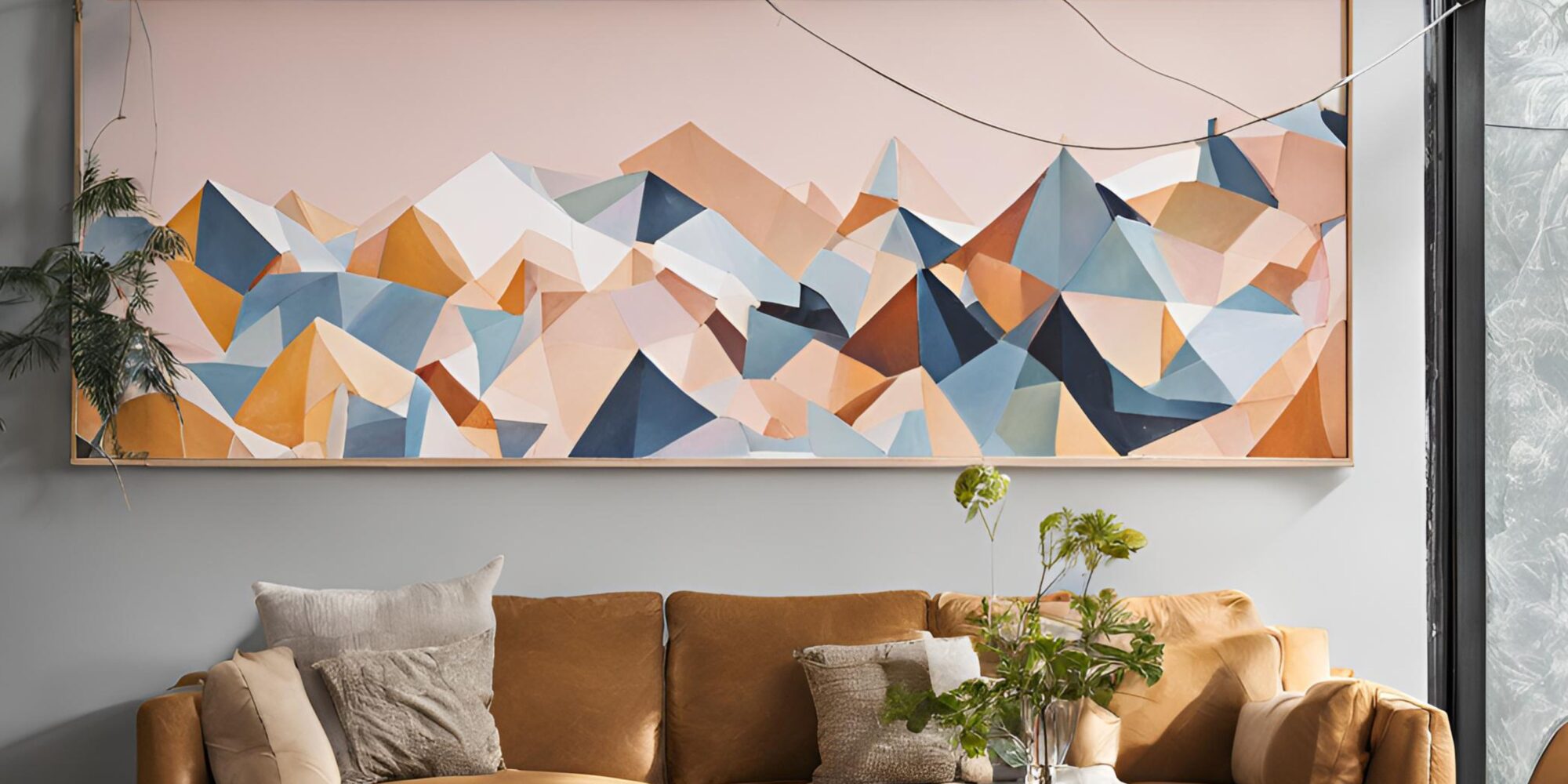Last Updated on March 17, 2025 by MishaOriginalsArt
Learning how to choose wall art can transform any space from ordinary to extraordinary. This comprehensive guide will help you navigate the process of choosing artwork that not only enhances your home’s aesthetic but also reflects your personal style.
Understanding Your Space
Before purchasing a painting, take time to evaluate your space:
- Measure Your Walls: Document the dimensions of potential display areas
- Assess Natural Light: Consider how different lighting conditions affect artwork visibility
- Identify Focal Points: Determine primary viewing angles and natural attention spots
- Consider Room Function: Match artwork tone to room purpose (relaxing for bedrooms, energizing for living spaces)
Sizing Guidelines
Follow these proportions for harmonious design:
- Above Furniture: Art should be 2/3 to 3/4 the width of the furniture below
- Wall Coverage: Large pieces should cover 60-75% of available wall space
- Gallery Walls: Maintain 2-3 inches between frames for a cohesive look
- Height Placement: Center artwork at eye level (57-63 inches from the floor)
Color Coordination
Create visual harmony through thoughtful color selection:
- Room Colors: Choose art that includes at least one color from your existing palette
- 60-30-10 Rule: Use dominant room color, secondary color, and accent color in artwork
- Contrast: Consider pieces that provide striking yet complementary color contrast
- Mood Setting: Use color psychology to enhance room atmosphere
Style Selection
Match artwork style to your interior design:
- Contemporary: Abstract, minimalist pieces with clean lines
- Traditional: Classical paintings, landscapes, or portraits
- Eclectic: Mix of styles with a unifying element
- Modern: Bold, geometric patterns or contemporary photography
- Rustic: Nature-inspired artwork or vintage pieces
Placement Tips
Strategic placement enhances visual impact:
- Create Balance: Distribute visual weight evenly across the room
- Scale Appropriately: Match artwork size to wall space
- Consider Architecture: Work with, not against, architectural features
- Layer Elements: Combine artwork with other decor for depth
Budget Considerations
Invest wisely in your wall art:
- Investment Pieces: Allocate higher budget for focal point artwork
- Mix Price Points: Combine statement pieces with affordable art
- Consider Alternatives: Explore prints, photography, or digital art
- Future Value: Research artists with growth potential
Choosing Wall Art is Actually Easy
Choosing wall art is a personal journey that combines practical considerations with aesthetic preferences. Take time to explore different options, and remember that the best choices are those that bring you joy while enhancing your living space. Start with one room, experiment with different styles, and gradually build a collection that tells your unique story.
FAQ
What is the rule for wall art?
Follow these essential guidelines:
- Hang at eye level (57-63 inches from floor center)
- Size should be proportional to wall space (60-75% coverage)
- Maintain consistent spacing in groupings
- Ensure proper lighting for visibility
- Balance with surrounding furniture
How do I choose a wall art theme?
Develop your theme by:
- Identifying your personal style preferences
- Considering your home's overall aesthetic
- Selecting a consistent color palette
- Choosing complementary subjects or styles
- Maintaining visual cohesion across pieces
How do I choose an art style for my house?
Select your home's art style by:
- Analyzing your interior design style
- Considering architectural features
- Reflecting on personal preferences
- Researching different art movements
- Testing samples or prints before investing

